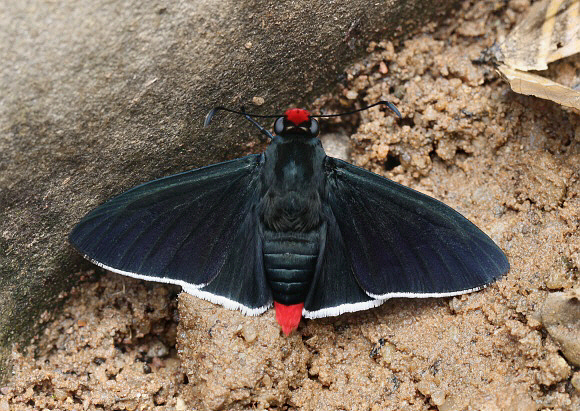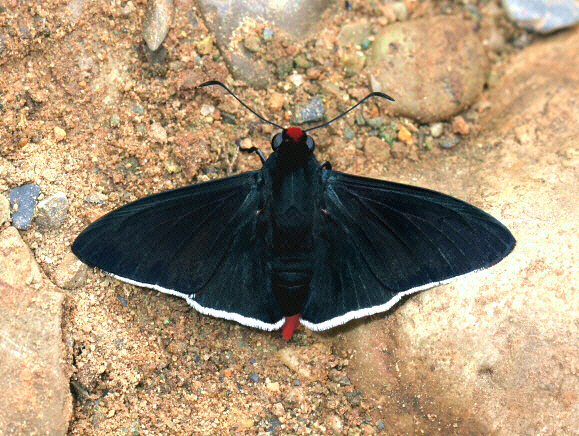
Introduction
The subfamily Pyrrhopyginae comprises 163 known species, most of which are found only in the tropical rainforests and cloudforests of South America, although a few reach as far north as Mexico, and a single species reaches Arizona. They are characterised by having bodies which are very large in proportion to the wings. Other characteristics include a massive muscular thorax, compressed abdominal segments, prominent eyes, and antennae with recurved clubs.
Several genera, including Jemadia and Elbella have a pattern of hyaline “windows” on the forewings, and are marked with stripes and bands of brilliant blue and white. Other genera such as Mysarbia, Mysoria and Pyrrhopyge lack the hyaline windows, and are characterised instead by having bright pink or red markings on the head and / or on the tip of the abdomen.
The 38 species in the genus Pyrrhopyge are all similar in appearance, typically having a black or dark brown ground colour, and white or orange fringes. In most species the head and tail are both bright red or orange, and in some species such as telassina there are orange shoulder-stripes on the thorax. The wings are either black or dark brown, and in sunlight both wing surfaces reflect a metallic sheen which varies in hue from green to blue or purple according to angle of view. In some species such as phidias the basal area of the underside hindwings is white.
Pyrrhopyge thericles occurs throughout tropical South America, and has 8 named subspecies.
Habitats
This species occurs in lowland and mid-elevation primary rainforests, at altitudes between sea level and about 1000m.
Lifecycle
To be completed.
Adult behaviour
Males are usually seen when discovered on the ground imbibing mineralised water from wet rocks, or at the edges of streams.
When settling to feed they initially hold their wings erect, but after a few moments spread them flat, particularly in cloudy or hazy conditions.

